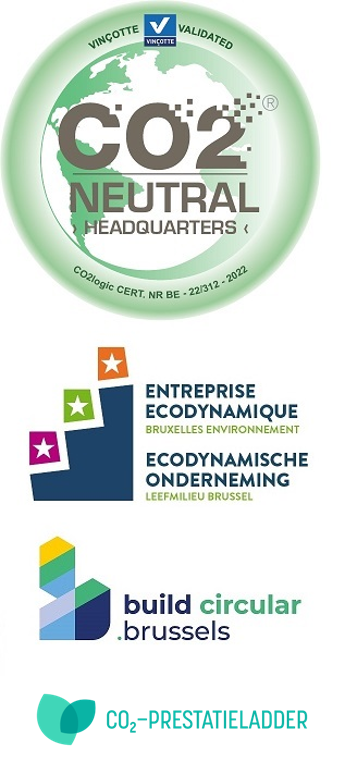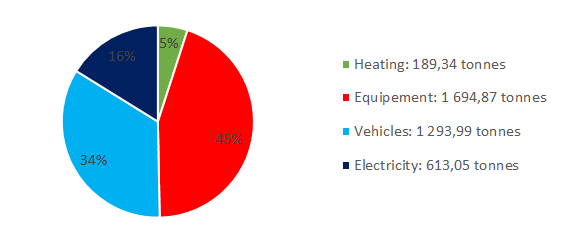Environment
CIT Blaton, a pioneer in environmental matters
CIT Blaton has been taking environmental steps for many years to reduce its carbon footprint.
In 2010, CIT Blaton built the first passive office building in Brussels for its own headquarters in Schaarbeek. Since 2018, CIT Blaton has also held the CO2 Neutral certification for this building.
In 2020, CIT Blaton became the first company to obtain the Level 3 Ecodynamic Enterprise label, the highest distinction in Brussels for good environmental management practices. Since then, this certification has been renewed every year.
Also since 2020, CIT Blaton has been supporting the BuildCircular project of Embuild.Brussels, through its involvement in the monitoring committee. The project aims to transition the construction sector towards the circular economy.
In September 2023, BCCA awarded CIT Blaton the level 3 of the CO²-Prestatieladder.

CO2 emissions (scopes 1 & 2) related to CIT Blaton’s operations amounted to 3,861 tonnes in 2021.

The various emissions sources include:
Heating:
- Gas consumption on these various sites.
Equipment:
- Fuel consumption related to our operations, namely the use of temporary generators and machinery on our work sites.
Vehicles:
- CIT Blaton commercial and company cars, used to transport workers and employees.
Electricity:
- Electricity consumption at our various sites (offices, warehouse, industrial site and building sites)
Based on a turnover of €316 million and an emissions level of 3,861 tonnes of CO2e, CIT Blaton therefore emits 12.21 tonnes of CO2e per million € of turnover.
CIT Blaton pledges to reduce this figure by 46% by 2030.
In September 2023, BCCA awarded CIT Blaton the level 3 of the CO²-Prestatieladder.
Action plan
To achieve these goals, we are implementing the following actions:
Actions regarding equipment:
- Actions aimed at minimising the use of generators on our work sites and replacing them with a connection (even temporary) to the electricity network
- Study and analysis of developments in terms of temporary solutions for electricity generation
Actions regarding vehicles:
- Transition to a 100% electric fleet, excluding hybrid cars, by 2030
- Development of mobility alternatives, in particular the use of bicycles and public transport
Actions concerning electricity and gas usage:
- Purchase of Belgian green electricity on all our sites (offices, warehouse and workshop, as well as all of our work sites [building sites])
- Completion of the installation of twilight sensors on all of our tower crane lighting systems
- Completion of improvement work on our site cabins: better insulation, heat pumps, etc.
- Energy-saving renovation of our warehouse in Sint-Pieters-Leeuw
- Launch of a campaign to monitor the electricity usage of our site installations
- Expansion of our photovoltaic panel surface (increased solar power output) at our Schaarbeek headquarters and at our Sint-Pieters-Leeuw warehouse
General actions:
Awareness campaigns on environmental challenges and energy consumption aimed at our staff

